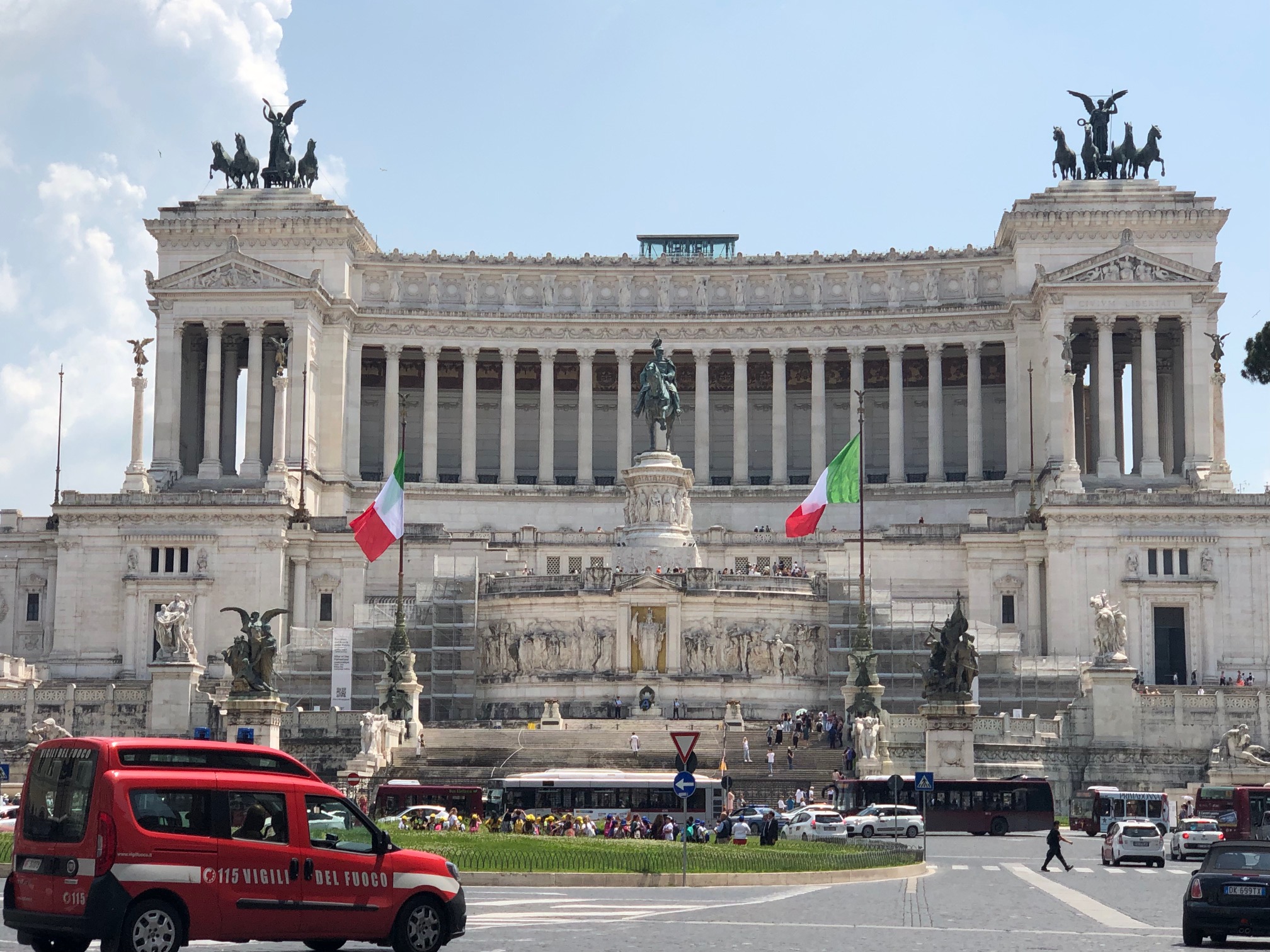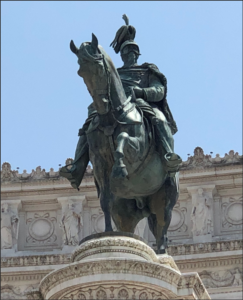The Bacon family has just returned from vacation in Italy, which included two days in Rome. We saw the Colosseum, of course, toured the phenomenal Vatican Museum, and marveled at the Trevi Fountain, all of which are well known to American tourists. The big surprise to us was the Altar to the Fatherland, a massive memorial erected between 1885 and 1935 to honor Victor Emmanuel II, Italy’s first king after the nation’s unification.
Among the more prominent features of the Altar to the Fatherland is the Tomb to the Unknown Soldier, dedicated to Italian soldiers who fell in World War I. The tomb was evocative of America’s own Arlington National Cemetery: two soldiers stood at permanent guard and two flames marked eternal remembrance.
No one does memorials like the Italians, and the Italian city-states before them, and the Romans before them. And no one does equestrian statuary like the Italians either. Here is the statue to Victor Emmanuel II:
After serving the Confederate Army during the Civil War, the greatest Virginia-born sculptor, Moses Ezekiel, settled in Rome where he mastered bronze working, set up a studio, and produced magnificent Italian-style statuary. Perhaps his best-known works were the statue of Stonewall Jackson at the Virginia Military Institute and the Confederate Memorial at Arlington National Cemetery.
The Jackson statue has been removed from the VMI main post to entrance of the Virginia Museum of the Civil War in New Market, and it appears that the Confederate memorial at Arlington will be taken down as well.
Virginians no longer produce memorable statuary. Like Alaric the Goth, who famously sacked Rome in 410 A.D., we only tear it down.
Correction: This post, which originally stated that the Jackson statue has been “removed from VMI,” has been corrected to note that it has been moved to the Virginia Museum of the Civil War, which is owned and operated by VMI. Also, notes, VMI spokesman Bill Wyatt, the VMI statue is a replica of the original, which stands in the West Virginia statehouse.
James A. Bacon is executive director of the Jefferson Council. The views expressed here are entirely his own. They likely do not even reflect the views of other members of the Bacon family!



Leave a Reply
You must be logged in to post a comment.